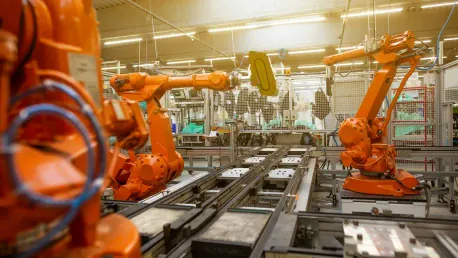Rohit Laila has decades of experience in the logistics industry, which spans supply chain and delivery. He is also passionate about technology and innovation in the sector. In this interview, we will explore the RDS fleet management system by SEER Robotics, its functionalities, efficiency in industrial settings, integration with enterprise-level software, dynamic global planning, innovative features, contributions to precision manufacturing, future development, and more.
Can you explain what the RDS fleet management system is and how it functions?
The Resource Dispatch System (RDS) fleet management system by SEER Robotics serves as an intelligent solution to enhance efficiency in various industrial scenarios. It’s primarily powered by the M4 Smart Logistics Management System, functioning as a “central neural network” that facilitates cross-floor and cross-region collaboration within large factories. The RDS seamlessly integrates with enterprise-level business software to ensure smooth data exchange and task distribution.
How does the RDS system enhance efficiency in industrial settings?
The RDS system enhances efficiency mainly by coordinating complex multilevel movements and cross-floor tasks. It dynamically synchronizes with elevators, automated doors, and other smart devices to ensure seamless task transitions. Additionally, it plays a significant role in cross-region collaboration by integrating with business software systems to orchestrate and monitor logistic operations in real time.
Can you describe how the RDS system integrates with enterprise-level business software such as manufacturing execution systems (MES)?
The RDS system integrates with enterprise-level business software like MES by allowing automatic task allocation and real-time data exchange. This integration enables companies to initiate tasks, monitor logistics, and achieve higher operational efficiency. For example, in the Zhejiang Tailin Bioengineering case, the system helped synchronize elevator schedules with robot routes during cross-floor transportation, which significantly improved cross-floor operational efficiency.
How does the RDS system employ dynamic global planning in complex environments?
The RDS system employs dynamic global planning by analyzing real-time robot positions, task priorities, and environmental changes. This helps in optimizing multi-robot pathfinding and traffic control to prevent deadlocks, especially in environments with narrow aisles or frequent human-robot interactions. At WINFAT Holdings Ltd., for instance, it resolved path conflicts during peak operations by dynamically adjusting robot routes and prioritizing tasks.
What innovative features does the RDS system introduce to reduce resource waste in logistics?
Among its innovative features, the RDS system employs “ride-sharing” and “pre-loading” modes to reduce empty robot runs, a common source of resource waste. The system utilizes global task-allocation algorithms to assign new tasks to robots nearing completion and directs robots to pick up items from the nearest locations. In the Chinawrr Automated Pallet Warehouse case, these features contributed to a substantial increase in storage efficiency and minimized idle travel.
How does the RDS system contribute to precision manufacturing?
In precision manufacturing, the RDS system helps control production beats, directly impacting efficiency and quality. It allows companies to simulate robot deployment dynamically, which helps in scaling robot numbers and simulating concurrent tasks to avoid errors. In Electrolux’s Swedish factory, the system optimized robot-system interfacing and resolved communication delays, which reduced production beat errors and increased output capacity.
What is the importance of the RDS system’s “global optimization” logic and “dynamic adaptation” capabilities?
The “global optimization” logic and “dynamic adaptation” capabilities are crucial because they drive decision-making through data. These features enable better cross-regional collaboration, complex path planning, and optimal resource utilization. As AI and IoT technologies advance, these systems will become even more integral to industrial automation, potentially transcending current scenario limitations.
Are there any limitations or challenges currently associated with the RDS fleet management system?
Like any complex system, the RDS fleet management system faces challenges, including the need for continuous improvement to handle real-time dynamic environments effectively. SEER Robotics addresses these challenges through ongoing research and development, ensuring the system remains at the forefront of innovation in fleet management.
What sets the RDS fleet management system apart from other similar systems in the market?
The RDS system distinguishes itself through its advanced integration capabilities, dynamic global planning, innovative task allocation modes, and continuous optimization. SEER Robotics maintains its competitive edge by persistently focusing on innovation and leveraging the latest technologies to enhance the system’s functionalities.
Can you share any upcoming projects or initiatives that SEER Robotics is involved in related to the RDS system?
SEER Robotics has several upcoming projects focused on expanding the capabilities of the RDS system. These initiatives align with the company’s vision to lead in the field of industrial automation by integrating cutting-edge technologies such as AI and IoT to continuously enhance operational efficiency and system adaptability.
Do you have any advice for our readers?
For those looking to enhance their logistics and industrial processes, I advise staying abreast of the latest technological advancements and considering how systems like the RDS can be integrated into existing operations. Continuous improvement and adaptation are key to maintaining efficiency and staying competitive in the industry.









